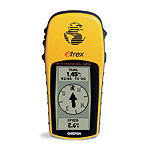Endangered Tiger Killed By Poachers Found By Tracking System
Tigers are one of the Earth’s most endangered species. At the beginning of this century there were about 100,000 wild tigers. Today there are less than 5,000 of these beautiful creatures alive, making tigers one of the world’s fastest disappearing species.
Two weeks ago a very rare tiger was killed by poachers on the Indo-Nepal border, according to wildlife officials. The adult male tiger’s body was found last week, approximately June 1, 2011. A WWF survey carried out in 2008 found just 121 adult tigers of breeding age in Nepal, so this is a real tragedy.
The tiger had been fitted with a collar carrying a GPS tracking system. The GPS tracking system enabled scientists to monitor the tiger in the wild.
According to Tikaram Adhikari, a warden at Bardia National Park in Nepal, the endangered tiger was last traced by the tracking system on May 9.”Next two days, we could not locate it. Then, early this week, we found that it had been killed by poachers,” he said.
“The tiger was moving towards human settlements. After seeing the tiger, the poachers offered him poisoned beef. It died after consuming the food… Four locals have been arrested on suspicion of poaching,” Adhikari said.




